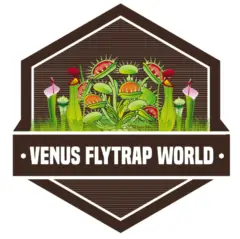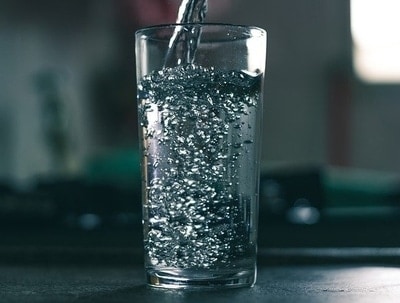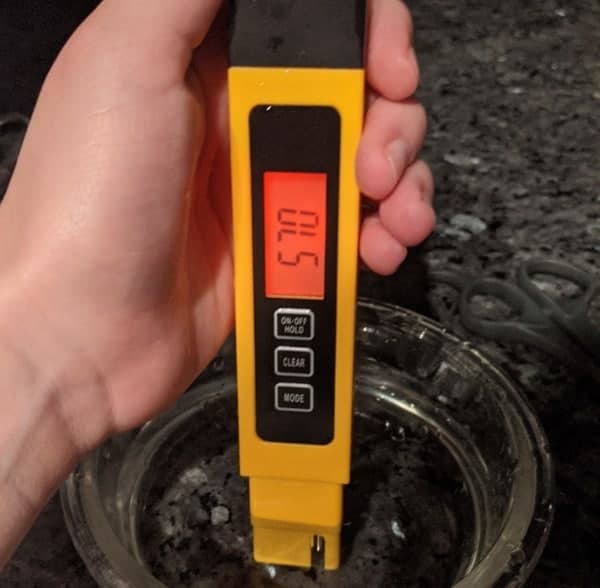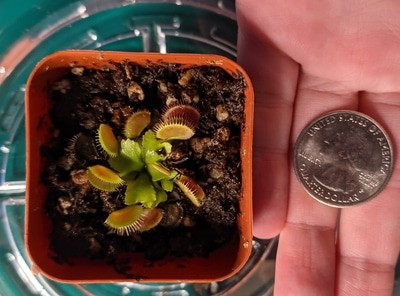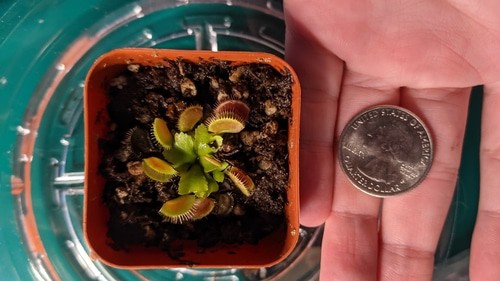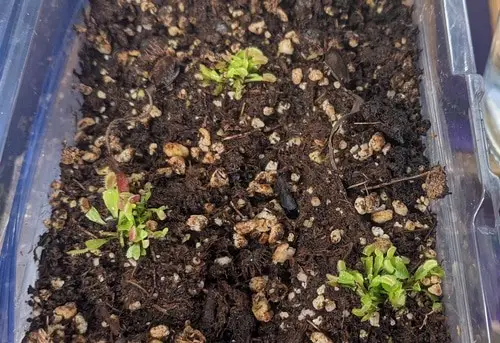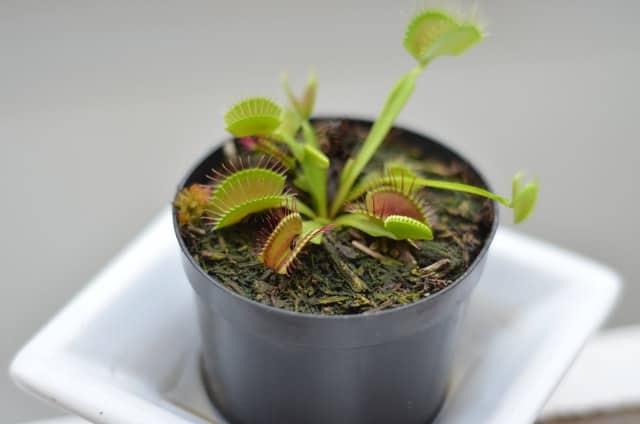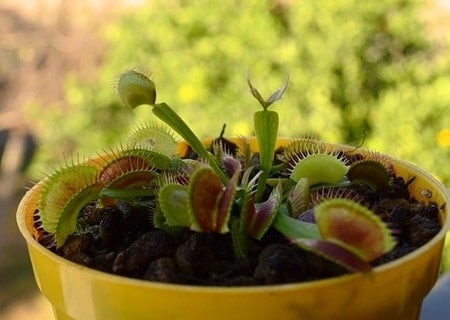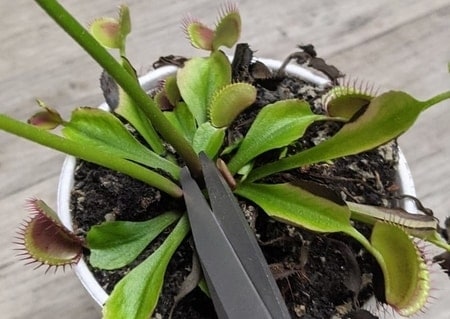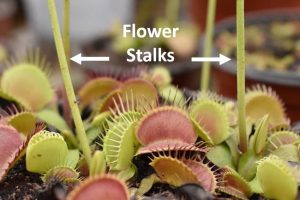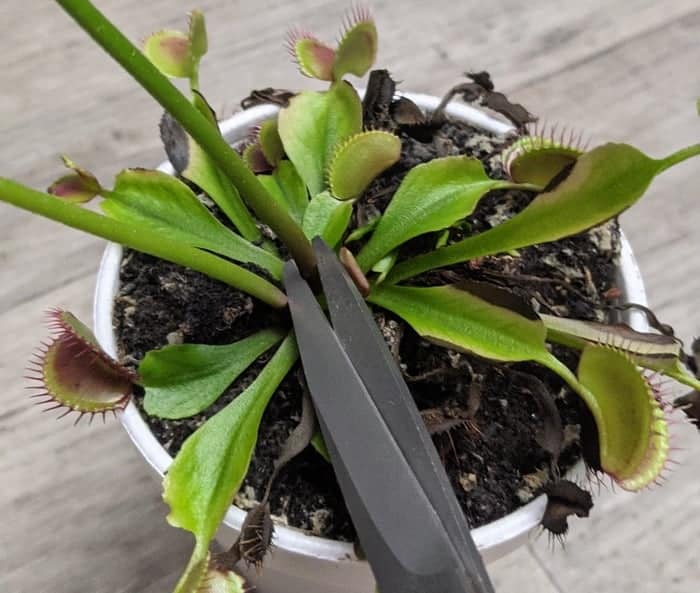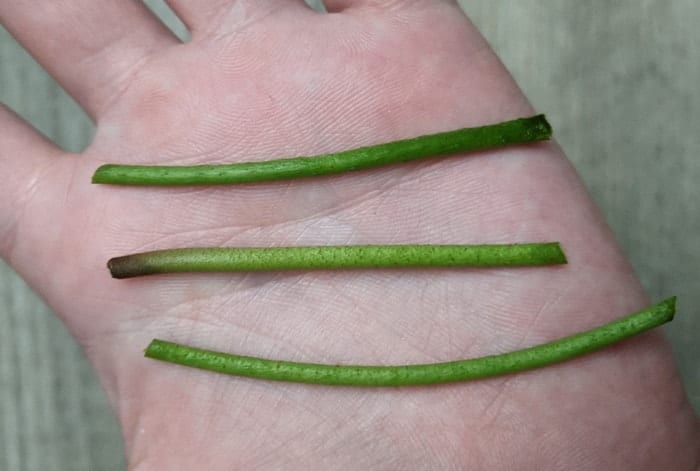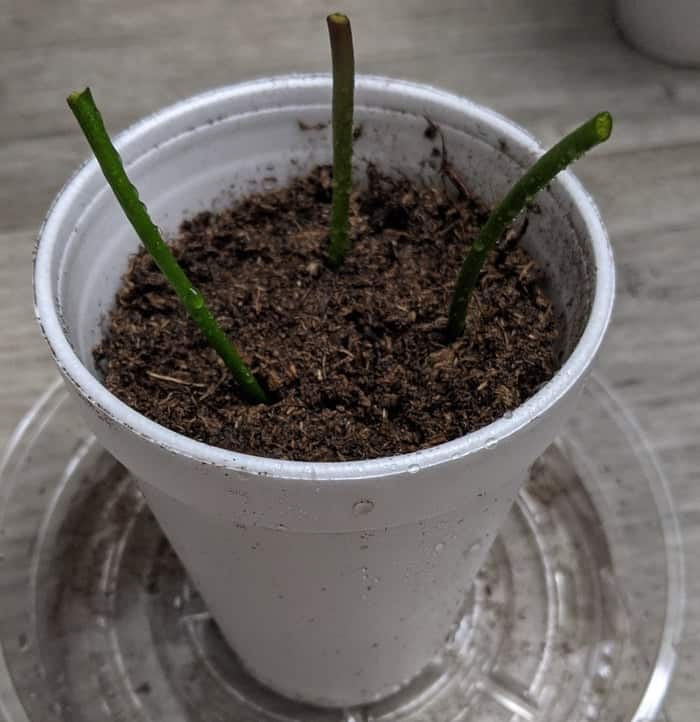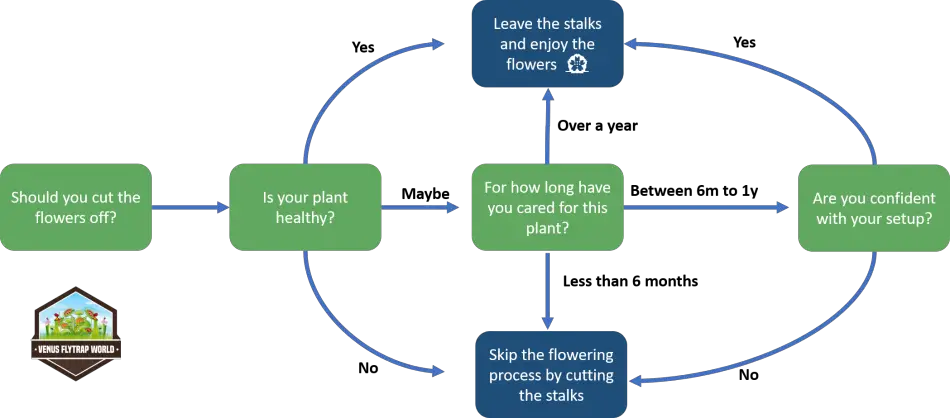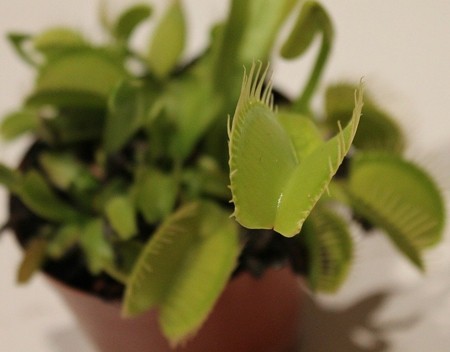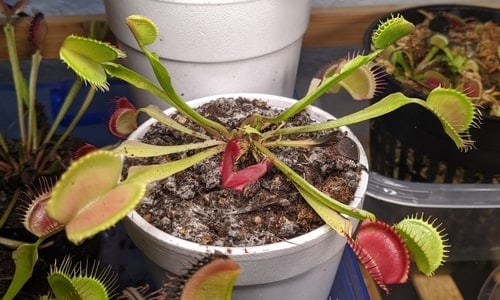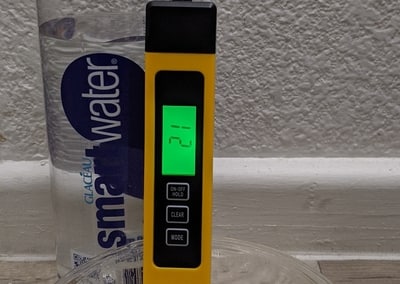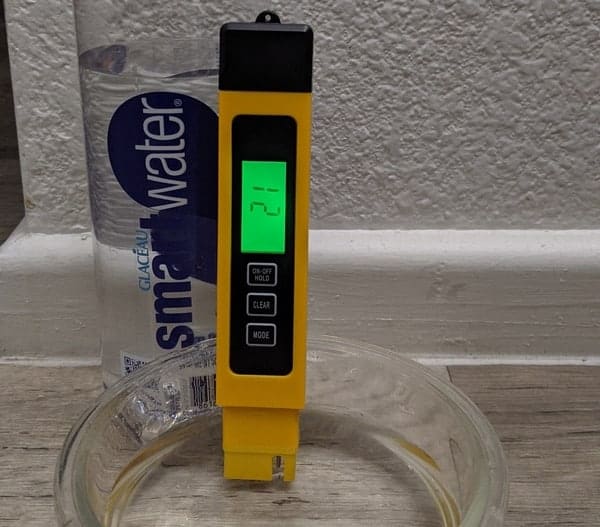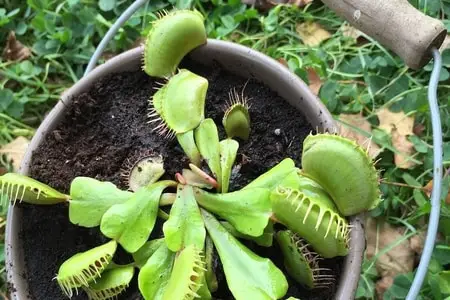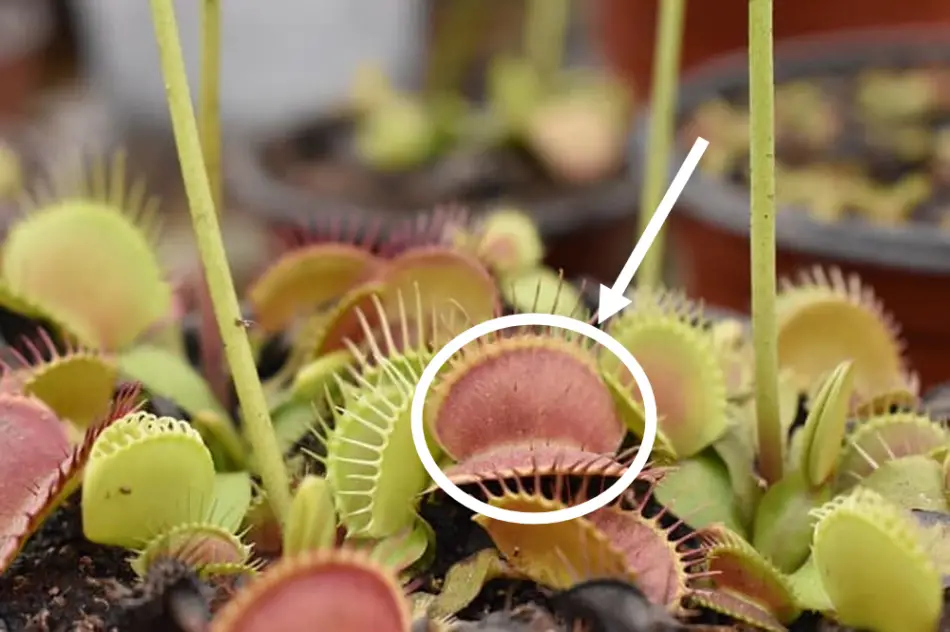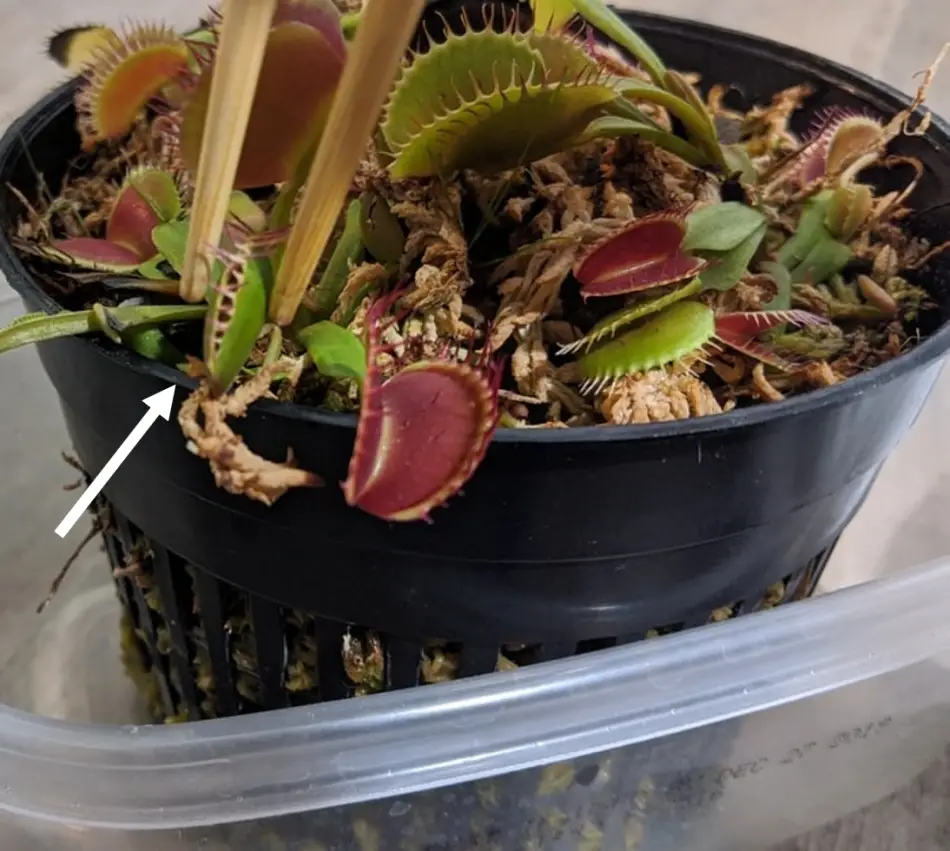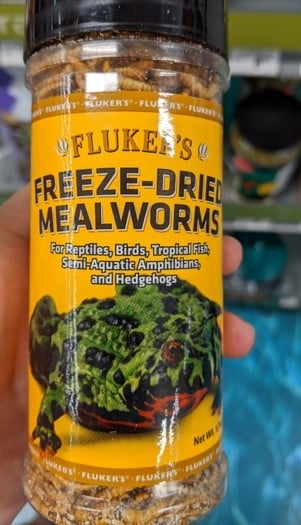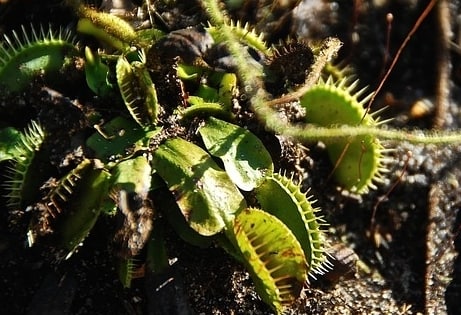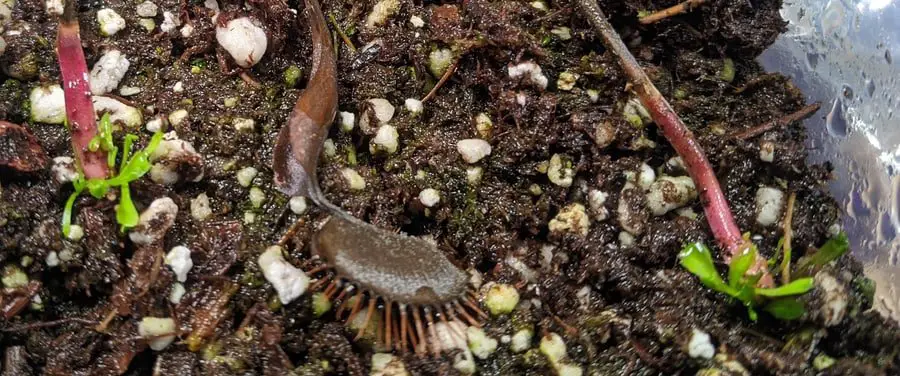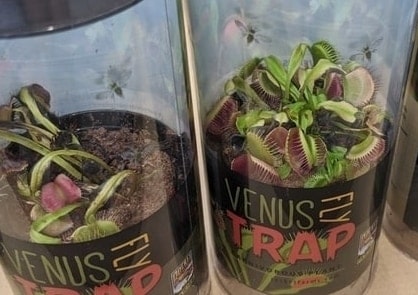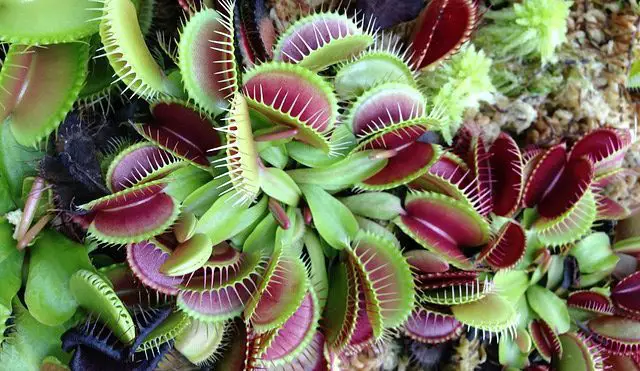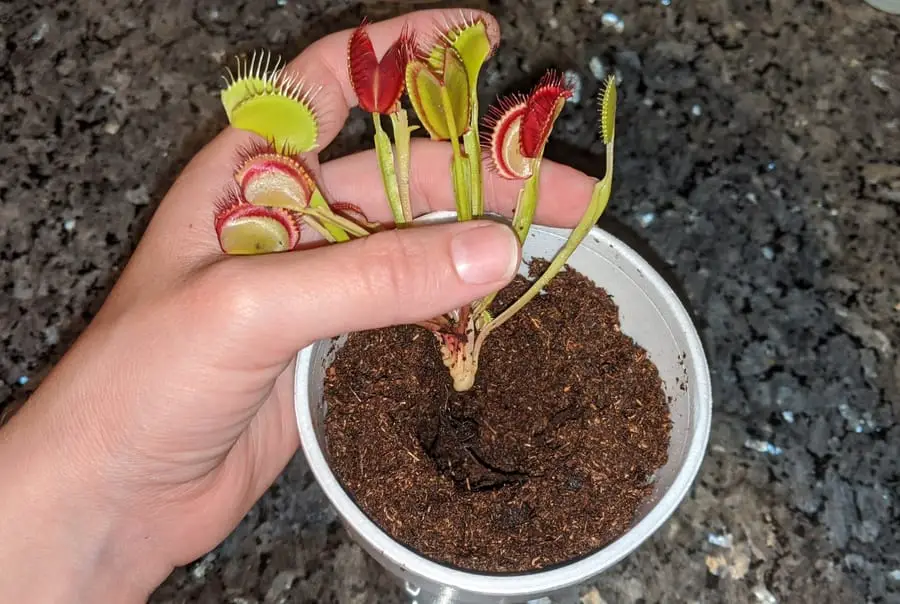Venus flytraps usually benefit from consuming bugs. But during dormancy, their feeding and other requirements need to be adjusted.
During dormancy, Venus flytraps do not need to be fed at all. Manually feeding Venus flytraps during dormancy can cause unwanted stress and harm them. Outdoor Venus flytraps will start consuming bugs when they are ready.
In this article, you will learn about feeding and fertilizing during Venus flytrap dormancy. I will give you many tips to keep your plant healthy through dormancy.
Feeding Venus Flytrap During Dormancy
In the winter, Venus flytraps go dormant. The dormancy process is essential and very similar to hibernation.
When temperatures drop, Venus flytraps enter a dormancy stage that lasts several months. When Venus flytraps go dormant, they change substantially. Slowly they start losing leaves and often shrink in size.
Often, Venus flytrap owners believe their plants have died during the winter, but the reality is that their plants are just dormant.
During dormancy, Venus flytraps are a lot more delicate. For that reason, you must carefully take care of the plant.
During dormancy, avoid manually feeding your Venus flytrap. Let your Venus flytraps live without insects unless it captures them on its own. Venus flytraps will start consuming insects when they are ready.
Venus flytraps do not require manual feeding during dormancy. However, sometimes their traps might be active. In that case, your plant might capture a bug during dormancy. If your plant traps and consumes bugs on its own, that is ok and completely safe. You let your plant decide what it needs.
Once your plant exits dormancy, you can start feeding again. However, it is not the main priority. Venus flytraps can live without consuming bugs at all.
So, even if your plant has exited dormancy, there is no rush to feed it. Many other factors are more critical than feedings, such as lighting, watering, and temperature levels.
Venus Flytrap Feeding Tips
When your Venus flytrap is ready to start capturing bugs again, follow these tips to ensure you feed your plant correctly:
- Do not feed Venus flytraps during dormancy.
- Generally, there is no need to feed Venus flytraps that grow outdoors. Outdoor plants can capture their own feed and do not require supplemental feeding.
- Only feed one single trap at a time. Never attempt to feed all the traps of your plant. One single bug can provide nutrition for the whole plant.
- Avoid overfeeding your Venus flytrap. Only feed your plant once every 2 to 6 weeks.
- Do not feed any human food to Venus flytraps. Chicken, meat, hamburger, fruit, or candy are not suitable food options. Giving your Venus flytrap human food will cause the trap to rot, stink, and potentially attract pests.
- Feed your plant with an exclusive bug diet: insects and arachnids are acceptable choices.
- Employ bugs that are small enough to fit in the trap completely. A good rule of thumb is to select an insect that is 1/3 of the trap’s size.
If you are unsure about the feeding process, do not attempt it. Feeding your Venus flytrap incorrectly can kill leaves and weaken the plant. Before you feed your plant, learn the process. This guide: Venus Flytrap Feeding Guide with Pictures, will teach you exactly how to do it. Also, this article can help you buy or select the right food option for your plant (bug type).
When Do Venus Flytraps Enter and Exit Dormancy?
This section will explain when do Venus flytraps go dormant and when do they exit dormancy. By knowing the status of your Venus flytraps, you can assess if feeding your plant is safe.
Venus flytraps enter dormancy as temperatures start to drop. There is no exact way to determine if your plant is dormant or not, but here are some general rules:
Venus flytraps start dormancy when they are exposed to temperatures below 45F for 2-3 weeks. The plants will start losing leaves and shrinking as dormancy develops. Venus flytraps won’t exit their inactive stage until the temperatures begin to rise in the spring.
Venus flytraps remain dormant for several months. The dormancy period might only last three months or go on for 4 or 5. Venus flytraps will exit dormancy as temperatures rise and light exposure increases.
Venus flytraps exit their dormant state as they are experience temperatures above 45-50F and more prolonged sunlight exposure. Usually, Venus flytraps exit dormancy at the beginning of the spring. In the spring, Venus flytraps start growing and produce flowers.
You will notice your Venus flytrap flourishing when it exists dormancy. When Venus flytraps are dormant, they look very sad, but as spring starts, they finally start producing new growth. Also, they might begin to produce flowers if they are mature plants.
Fertilizing During Venus Flytrap Dormancy
Fertilizing Venus flytraps can be a challenge year-round, but during dormancy, it is never recommended.
Do not fertilize Venus flytraps during dormancy. The nutrients in fertilizers can kill Venus flytraps as they build up in the soil. During dormancy, fertilizing is not beneficial and can harm or kill the plant.
Venus flytraps are very sensitives to nutrients. Nutrients and related components are harmful to Venus flytraps. As a result, they thrive in nutrition-less soil, and they receive pure water.
Fertilizing Venus flytraps is not impossible, but it an advanced practice; never attempt to fertilize your plant if you are a beginner.
The general approach to fertilize Venus flytraps is to use a foliar fertilizer, dilute it with distilled water and apply it to the leaves. Even though fertilizing is possible, skip it altogether during dormancy. It won’t provide any benefit, and it can kill your plant.
Still, there are some alternate options besides fertilizing. When your Venus flytrap is not dormant, you can follow this advice to promote your plant’s growth:
- Provide plenty of sunlight: Venus flytraps benefit from long hours of daylight. 12+ hours of light exposure is optimal.
- Feed your plant or grow it outdoors: Make sure your Venus flytraps consume one bug a month to encourage growth through a nutrition boost.
- Skip the flowering process: Prevent your Venus flytrap from flowering by cutting off the flower stalks as soon as they spur. Skipping the flowering process gives the plant an extra boost of growth.
- Employ deep pots with plenty of room: Venus flytraps have long roots, which benefit from long vertical containers that encourage root growth.
Venus Flytrap Dormancy Care Tips
During dormancy, Venus flytraps require extra care. Follow the instructions below to keep your plants healthy during the winter season:
- Continue to water your plant often, but lower the watering frequency to adapt to less water consumption and colder days.
- Do not fertilize Venus flytraps. Generally, fertilizing Venus flytraps is challenging and should only be done when you are an experienced grower (and never during dormancy).
- Avoid feeding your Venus flytrap during dormancy. It can cause leaf loss and stress.
- Remove dead leaves when necessary. Trimming Venus flytraps during dormancy is safe.
- Repotting at the end of dormancy is a common and effective practice. You can read this guide to learn about the potting and repotting process.
- Keep your dormant Venus flytraps at temperatures below 45-50F to keep them dormant.
- Do not worry about the lighting requirement as much. Fully dormant Venus flytraps require very little light exposure.
- Avoid letting your Venus flytraps freeze during the colder months. Venus flytraps can handle freezing temperatures, but once the temperature drops below 25F, it can be dangerous for the plants.
- Preferably grow your Venus flytraps outdoors through the year. With that approach, they can enter and exit dormancy naturally with the season changes.
- If your plant looks dead, continue to care for it until the end of dormancy. Then, when the spring starts, you can determine if your plant was just dormant or dead.
I hope this article helped you learn more about Venus flytrap care during dormancy. Growing carnivorous plants can be a challenge, but it is a gratifying experience.
For a detailed guide on Venus flytrap care, make sure to read this article: Ultimate Venus Flytrap Care Guide (it includes a free downloadable care sheet!). If you are growing your Venus flytraps indoors, this article specializes in indoor growing: Venus Flytrap Indoor Care Guide.
